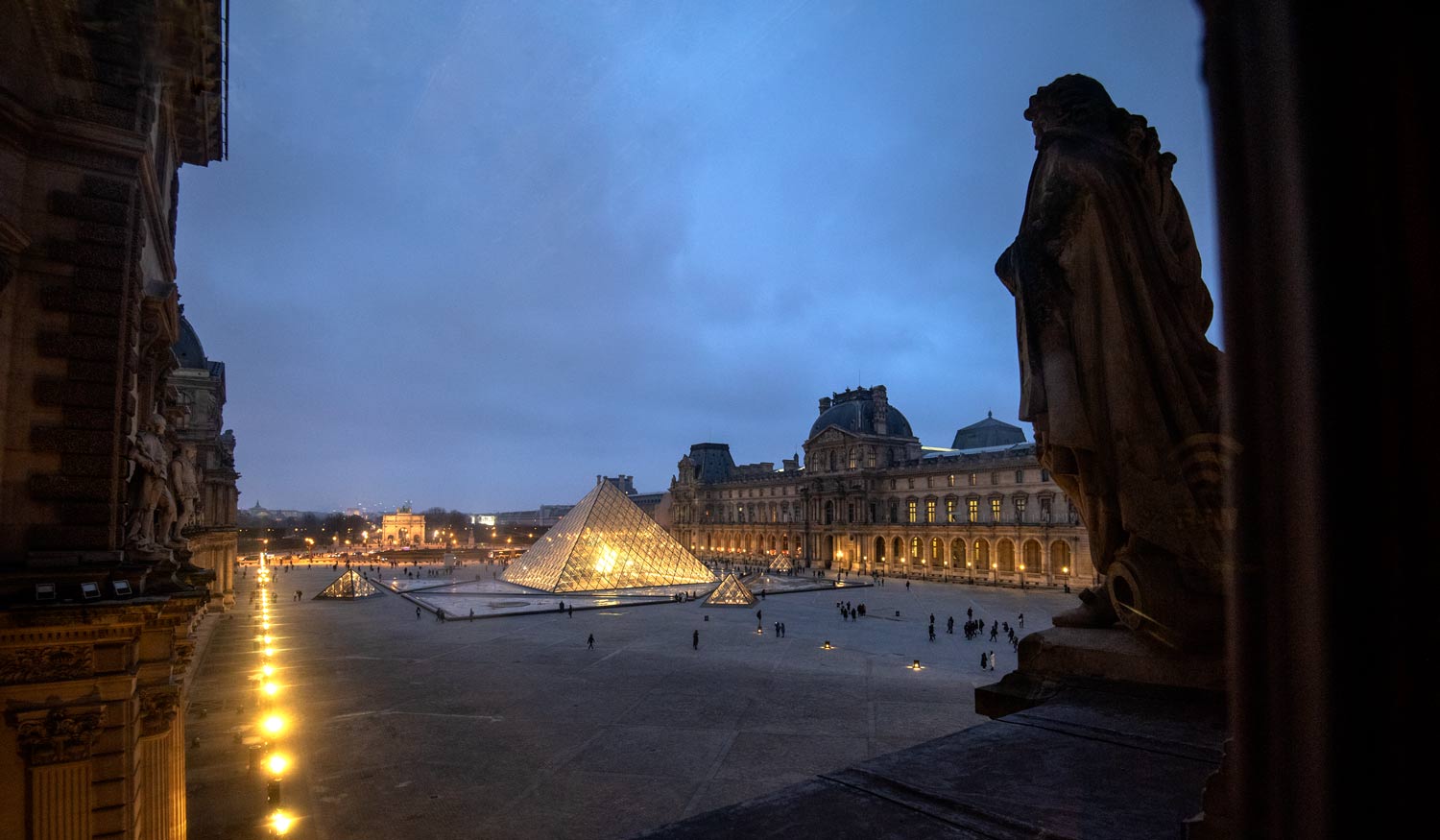What is the Louvre?
Photos by Forrest Anderson
The Louvre has had quite a run. In 2018, it had a record 10.2 million visitors, a 20 percent increase over the year before. In May, the Paris museum got so many visitors that the museum's ticketing and security workers went on strike briefly because they were overwhelmed with the numbers. That was before people began flocking to the museum’s air-conditioned buildings to escape a summer heat wave. The museum had to institute a ticket system limiting people to a time slot and spreading traffic throughout the day.
It’s never been more cool to be the world’s largest museum. Beyonce and Jay Z are believed to have boosted the museum’s visitors with a music video they filmed at the museum that has gotten 180 million hits on YouTube. Interest in the museum’s iconic glass pyramid has been boosted this year by both its 30th anniversary and the death of its famed architect, I.M. Pei, at age 102. This year was also the 500th anniversary of Leonardo da Vinci’s death, placing the Mona Lisa, his most famous painting and the Louvre’s most popular work of art, at the center of a flurry of exhibitions and other commemorative events.
The Louvre is famous for its unparalleled Western art collection, which spans the Middlle Ages to 1848, and its superb collections of artifacts from many ancient civilizations. Even if it didn’t have the collections, however, the building itself is a world-class architectural monument and the product of some of the world’s finest architects.
Over its 800 years, the Louvre has evolved from a fortress to an opulent kings' palace to the museum to a world-renowned brand that blends ancient civilization with cutting edge technology, conservation science and media.
The origins and meaning of the name “Louvre” have been lost to history, although there are a variety of unproven guesses. The building itself began as a fortress that French King Philippe Auguste built in the 12th century to defend Paris at what was considered a weak spot, the river Seine, from invaders from the northwest. The fortress in what was then the outskirts of the city was nearly square, with thick walls, a water-filled protective moat and ten circular defensive towers. In the center was a tower keep with its own dry moat that was used as a prison, the royal treasury and courtrooms at various times. Philippe Auguste kept a defeated enemy, Ferdinand, count of Flanders, there for 13 years. Remains of the castle from the reign of Saint Louis (1226-70) can be seen in the museum’s medieval Louvre exhibit. The cylindrical keep became a symbol of the monarchy’s power that survived in references long after the tower was demolished in 1528.
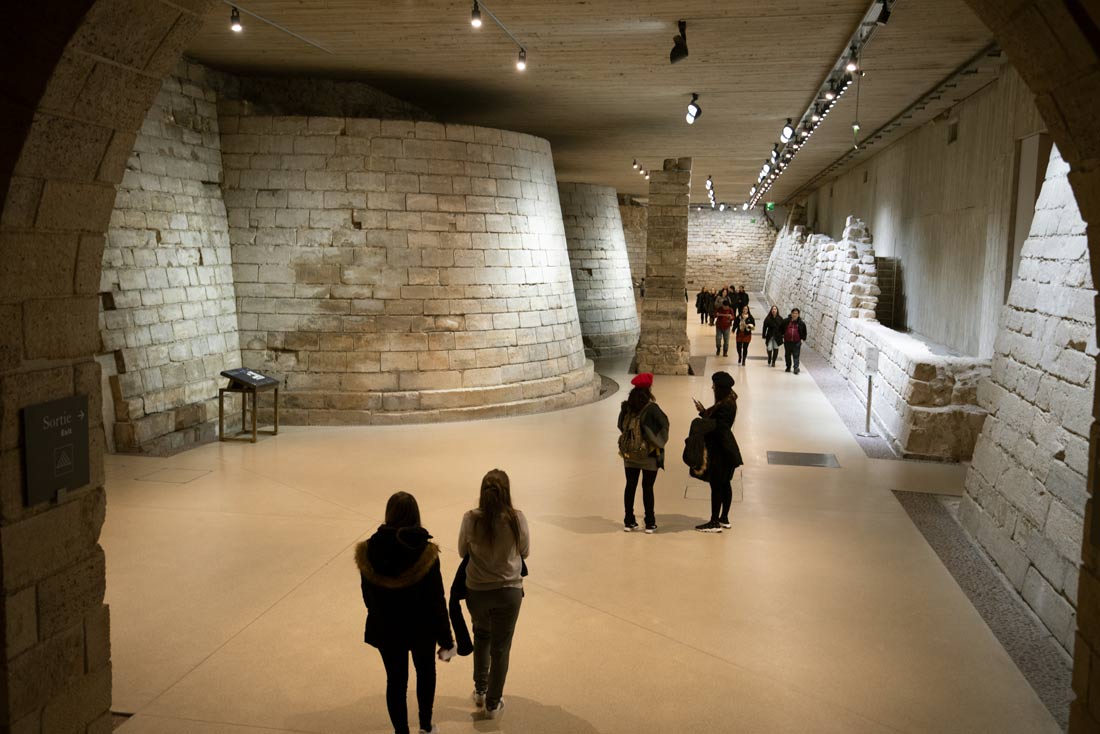
Sections of the fortress that can still be seen at the Louvre.
Paris eventually grew up around the fortress, rendering it less useful to defend the city. The kings lived at other palaces outside of Paris or at the Palais de la Cité. Charles VI in the 14th century was offended by an incident at the palace and moved to the Louvre. It thereafter became the Paris residence of the kings, although they lived in other residences most of the time. They began a building and expansion project at the Louvre that is still under way. Between 1364 and 1380, Charles V, his architects and his builders converted the fortrress into apartments, salons, and a library that eventually evolved into the National Library of France.
Francois (1515-47) was defeated at the Battle of Pavia in 1525 and captured in Spain. When he managed to get back to France, he decided to make his main residence in Paris to regain control of the capital. Francois ordered the keep demolished and a building program began that transformed the Louvre into a Renaissance palace. Francois was an art lover who amassed at the Palace of Fontainebleau outside of Paris the art collection that became the nucleus of the Louvre’s art holdings. He persuaded Leonardo da Vinci to move to France and acquired the Mona Lisa and other da Vinci art after the great artist died.
In 1564, Catherine de’ Medici directed the building of the Palais des Tuileries to the west of the Louvre. During the reign of Henry IV (1589–1610), he removed remnants of the medieval fortress to create a link, the Grande Galerie, between the Palais des Tuileries and the Louvre. Henry IV invited hundreds of artists and craftsmen to live and work on the building's lower floors, a tradition that survived until the 19th century and that solidified the Louvre's association with art.
French royals at the time were thought to have the power to heal illnesses with their touch. Henry IV received tuberculosis sufferers in one of the Louvre’s halls, anointing them with holy water while saying, “Le roy te touché, dieu te guerit” (“The king touches you, God is healing you”).
The famous Louvre Colonnade built in the 1600s is considered architect Claude Perrault’s finest masterpiece and the foremost example of French architectural classicism. It was built using rules articulated by the ancient Roman architect Vitruvius, whose works Perrault had translated into French. The colonnade became a model for other famous buildings such as the Metropolitan Museum in New York.
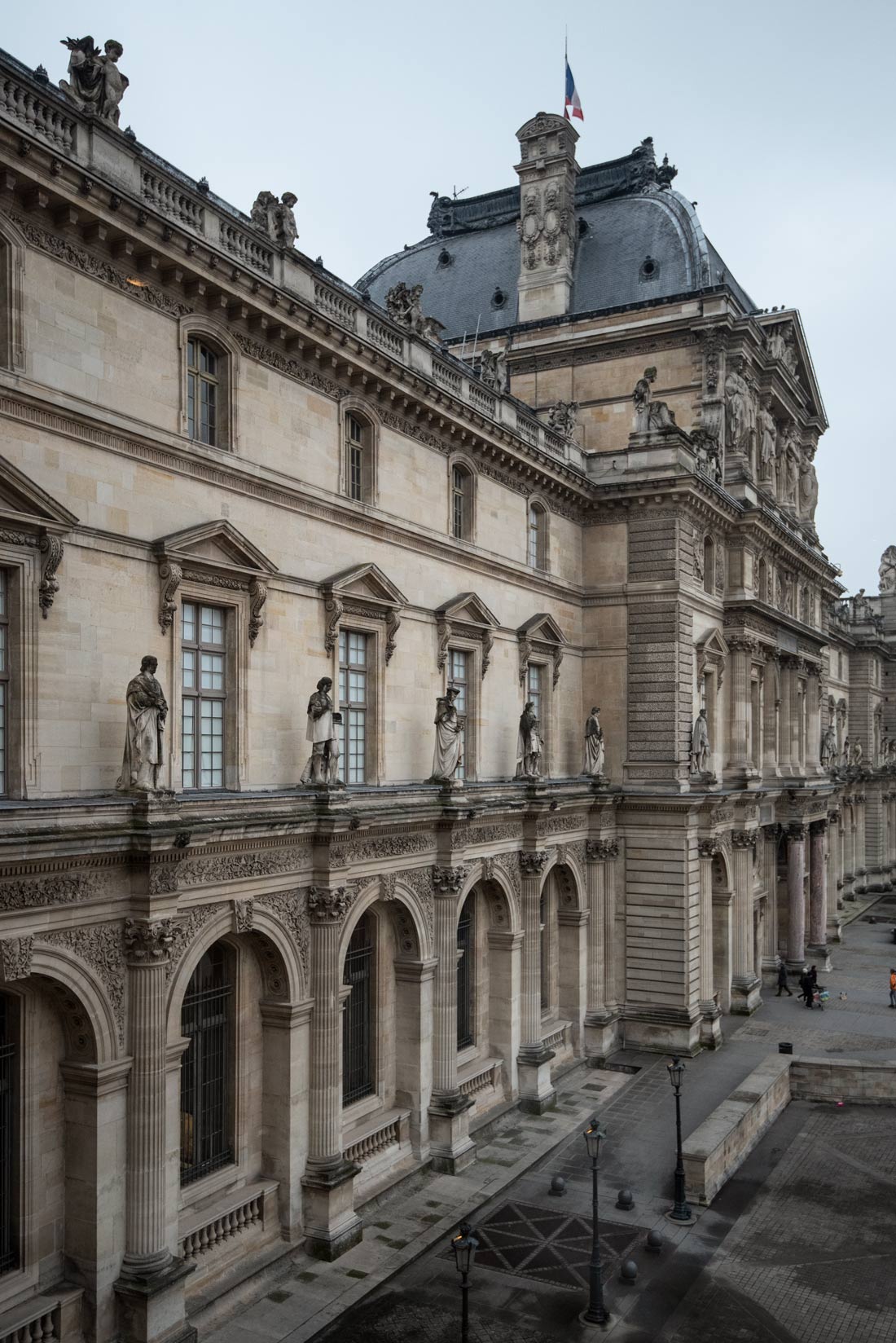
Statues on the Louvre represent both historical and symbolic figures.
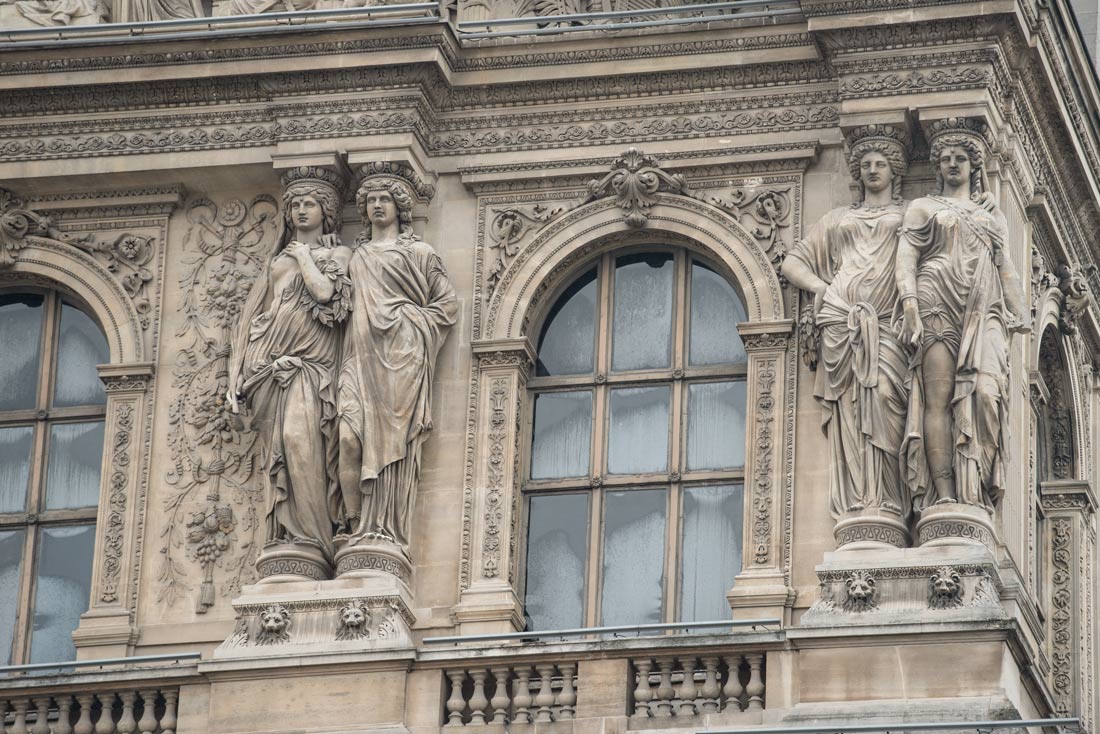
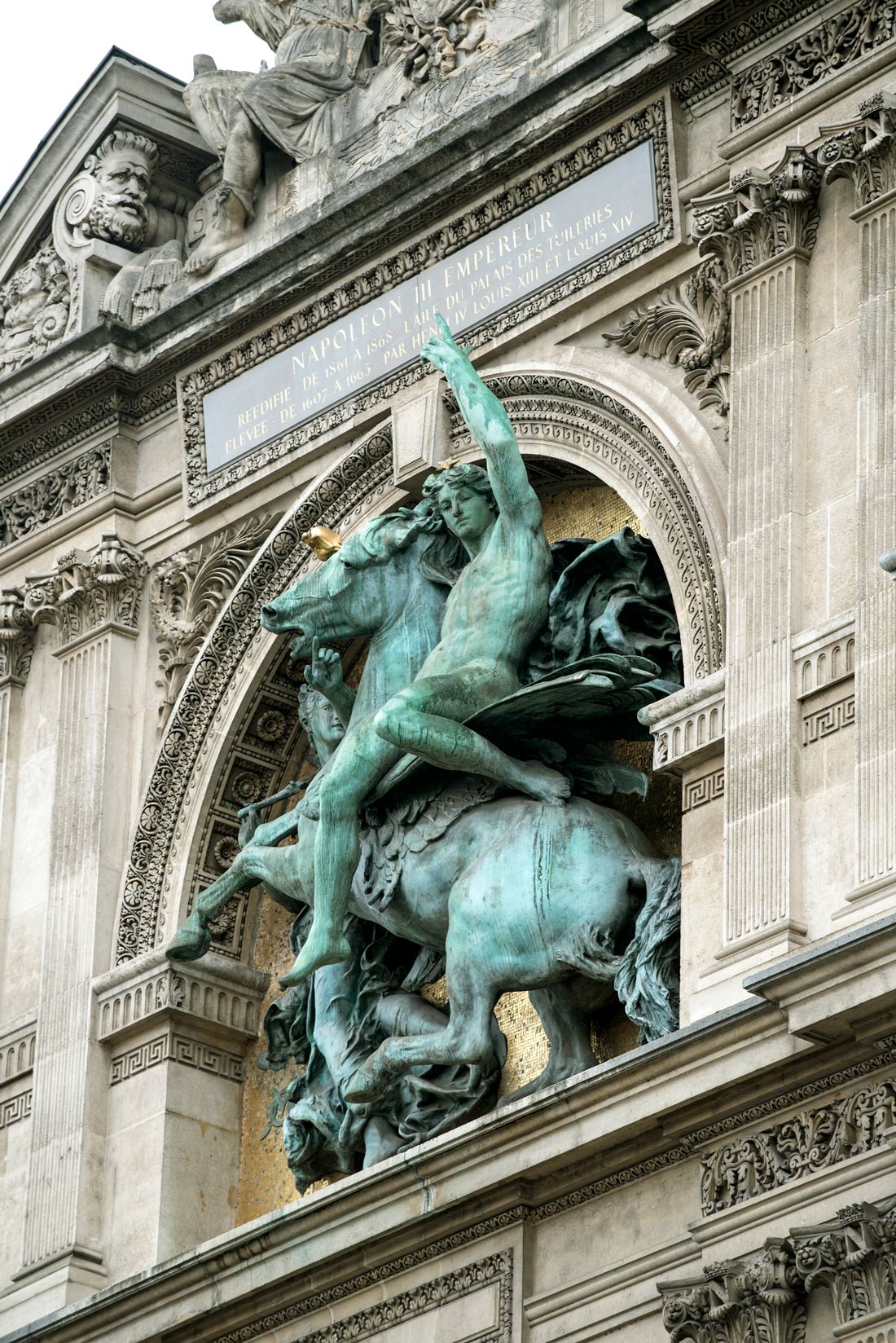
A statue of Napoleon III from the 19th century, and, below, a closeup of a statue.
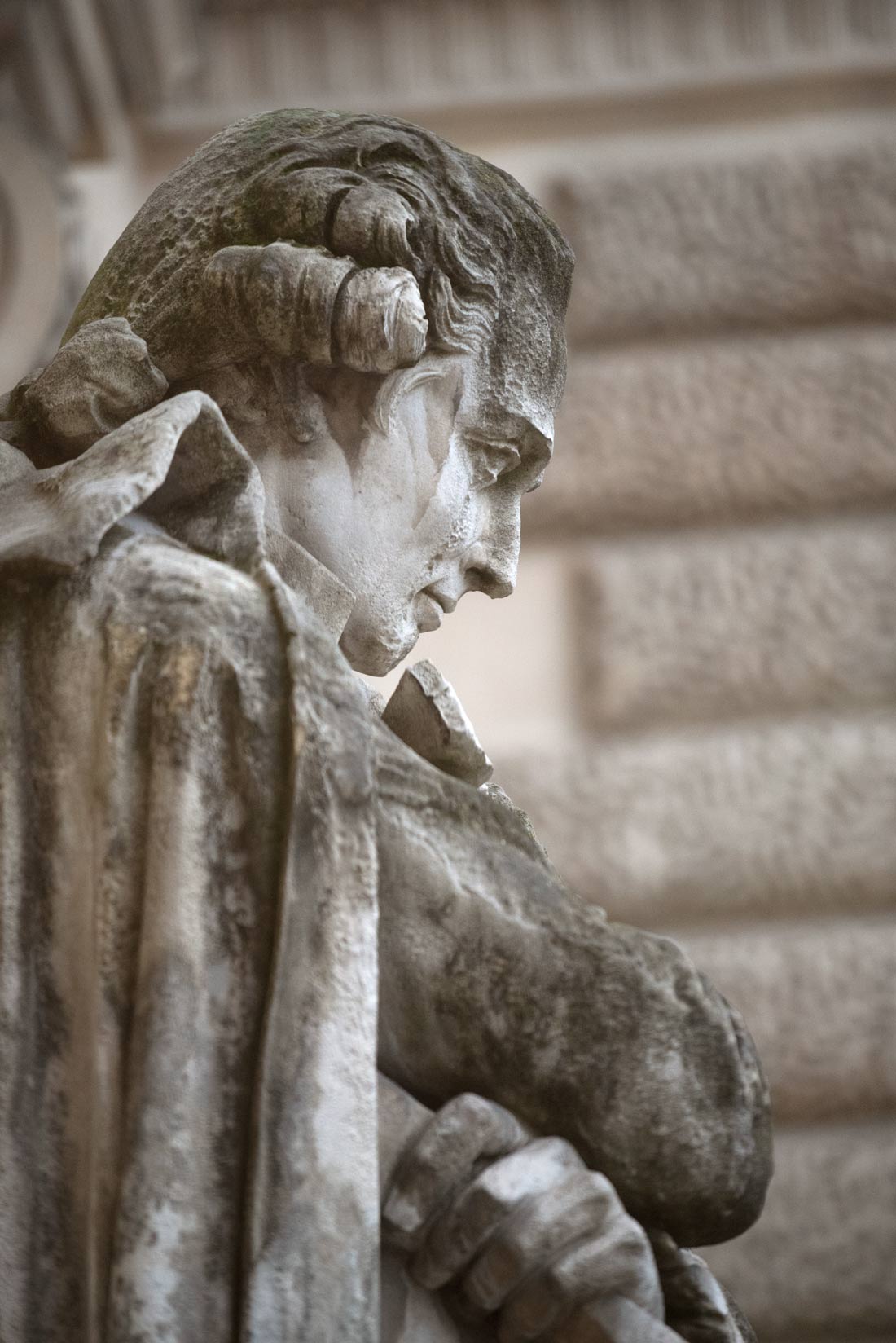
After years of living in the Louvre, Louis XIV decided to move the court to Versailles, where the nobility lived until the French Revolution.The Louvre continued as a residence for artists working under royal patronage. The family of famed cabinet maker André-Charles Boulle lived and worked there for several generations. Boulle kept priceless art in the Louvre, including 48 drawings by Raphael that were destroyed in a fire in 1720.
Intellectuals and artists living at the Louvre suggested that the French court create a museum dedicated to the king in the Louvre. This was the beginning of the Louvre museum. The museum began with a small collection of the king’s most prized artworks, was opened to select visitors on certain days of the week. By the mid-18th century, a public art gallery with 96 pieces from the royal collection, including works by Raphael, Titian, Rembrandt and others, was opened for viewing on Wednesdays and Saturdays. Under Louis XVI, the royal museum became official policy. During the French Revolution, the National Assembly ordered that the Louvre be used as a museum to display the nation's masterpieces. The museum ran on the ten-day week of the French revolutionary calendar: the first six days of a week were for artists only, the next three for the public, and the last day for repairs. The museum implemented 537 paintings, the majority of them royal and confiscated church and other property.
In 1794, France's revolutionary armies began bringing pieces from Northern Europe, augmented after the Treaty of Tolentino (1797) by works from the Vatican. Unlabelled paintings hung frame to frame from floor to ceiling. The building closed in 1796 for structural problems and reopened in 1801 with the art arranged chronologically and with new lighting and columns.
The collection was fed by loot from successful military campaigns under Napoleon I. In 1790, he led an expedition to Egypt. Teams of artists and scientists accompanying the armies into battle had lists of paintings, sculptures and other pieces that were collected, crated and shipped back to France. Napoleon’s art advisor, Dominique Vivant Denon, discovered and extensively studied the Valley of the Kings in Egypt. Napoleon later installed him as the director of the Louvre, which was renamed Musée Napoléon.
Acquisitions came in from Egypt, Spain, Austria, the Netherlands and Italy as war spoils or items turned over by treaties. Under the 1797 Treaty of Campo Formio, Italian cities were required to contribute pieces of art and patrimony for Napoleon's "parades of booty" through Paris before being put into the Louvre. The French also looted churches and palaces, including Saint Mark’s Basilica, which outraged the Italians. After the 1797 Treaty of Tolentino, two statues, the Nile and Tiber, were taken to Paris. The Nile was returned to Italy after Napoleon died, but the Tiber is still in the museum.
Although the Rosetta Stone was discovered by the French, it never made it to the Louvre Museum. It was seized by British forces following the defeat of Napoleon in Egypt and the subsequent signing of the Treaty of Alexandria in 1801. It is now on display at the British Museum.
After Napoleon’s defeat at Waterloo, the Louvre’s administrators hid many works in their private collections to keep them from being returned to former owners. Foreign states sought Britain’s help and many works were returned while deals were struck for the museum to keep others.
During the Restoration (1814–1830), Louis XVIII and Charles X purchased and added pieces and created the department of Egyptian antiquities curated by the famous Egyptologist Jean Francois Champollion, which increased by more than 7,000 works with new acquisitions of collections. In 1861, Napoleon III bought 11,835 artworks including 641 paintings, Greek gold and other antiquities. Between 1852 and 1870, under Napoleon III, the museum added 20,000 new pieces to its collections. Holdings have grown steadily through donations and bequests since.
The complex is divided into the "Old Louvre,” medieval and Renaissance pavilions and wings surrounding the Cour Carrée and the Grande Galerie along the bank of the Seine; and the "New Louvre,” which is 19th-century pavilions and wings on the north and south sides. The public can tour more than half a million square feet of the palace.
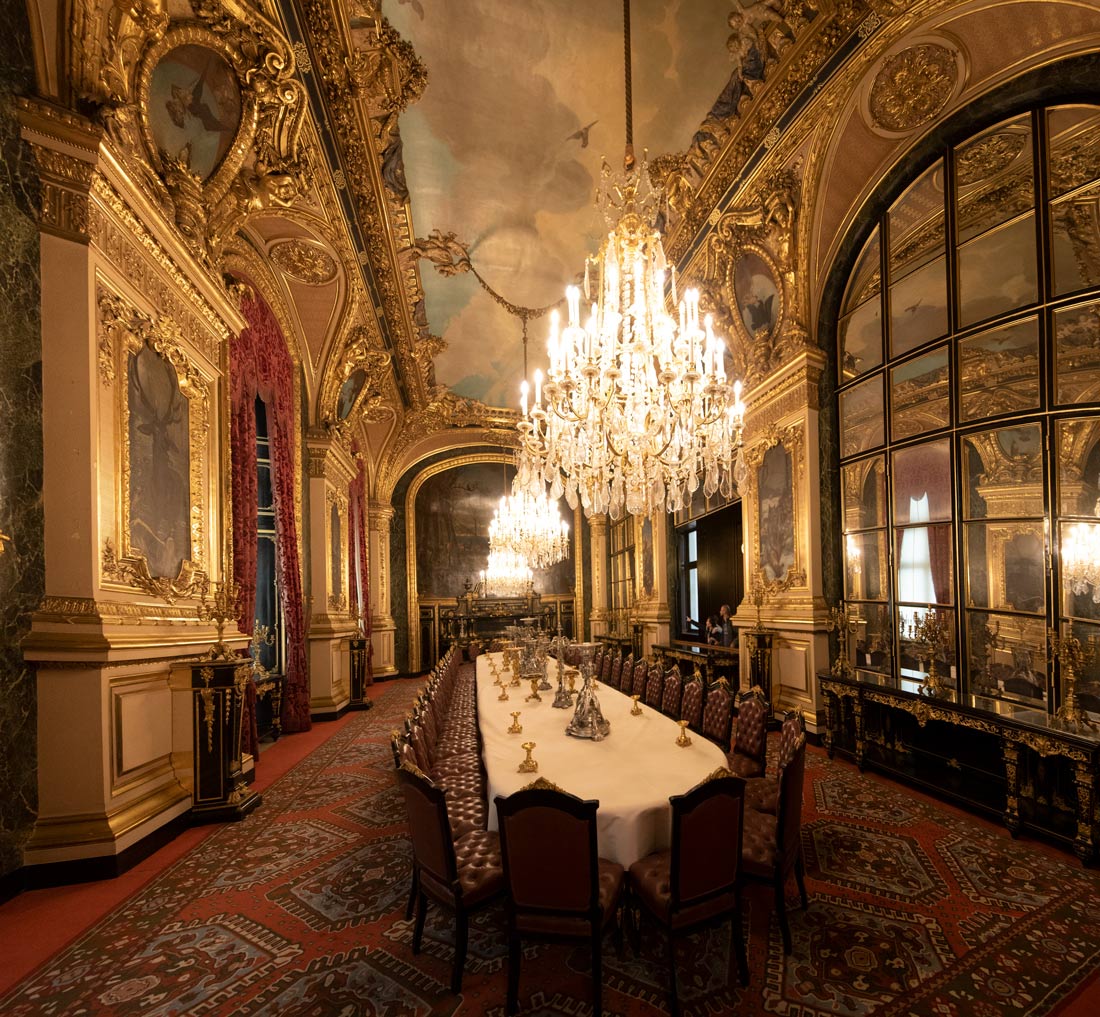
The royal apartments in the Louvre.
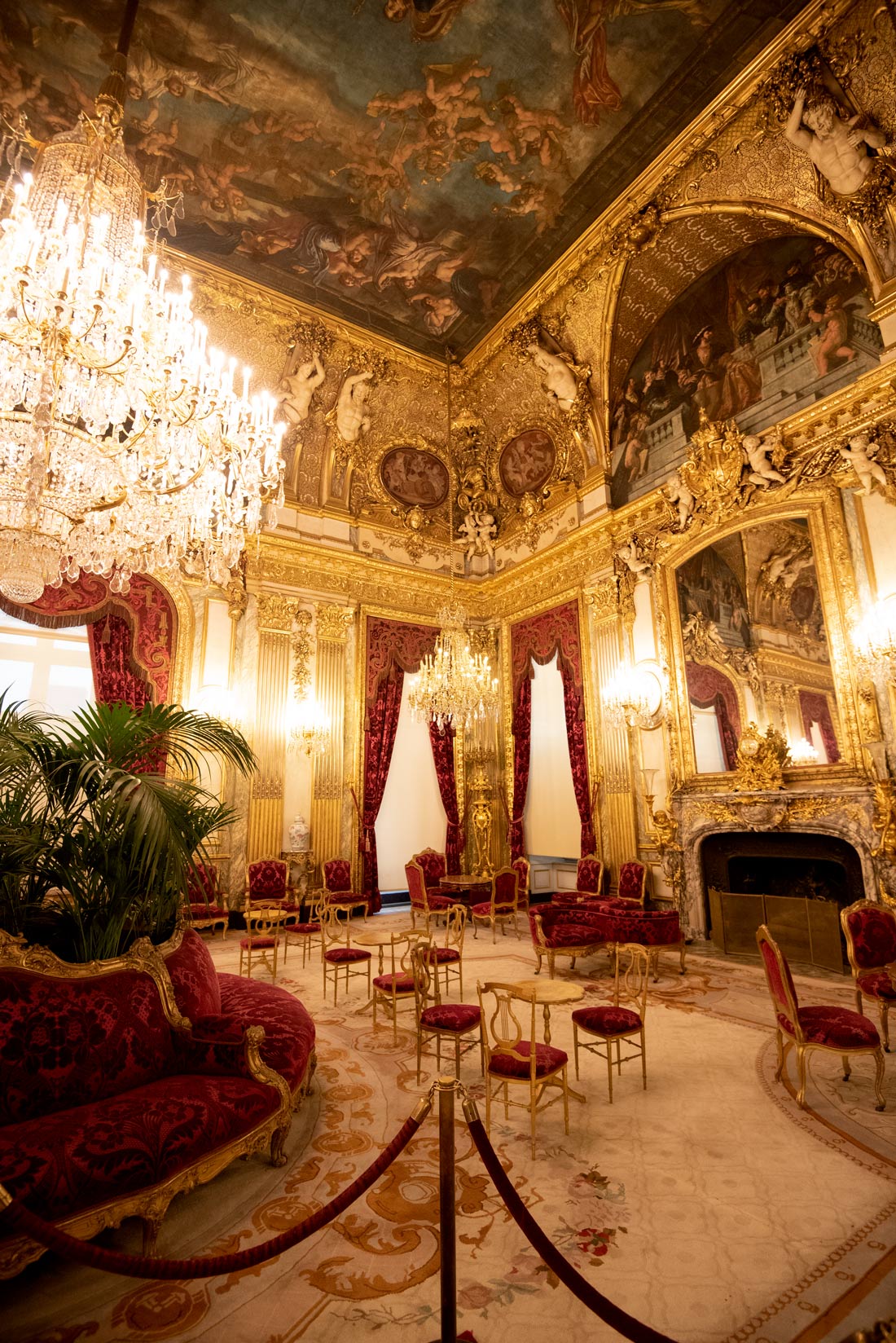

French rulers until 1870 lived at the Tuileries Palace with some periods at the Louvre. With the fall of the French empire and burning of the Tuileries palace in 1871, administrative departments were set up in the Louvre. Parts of the Louvre that were damaged when the Tuileries Palace burned were restored. There have been proposals in recent years to rebuild the Tuileries Palace as an additional space for display of treasures from the Louvre.
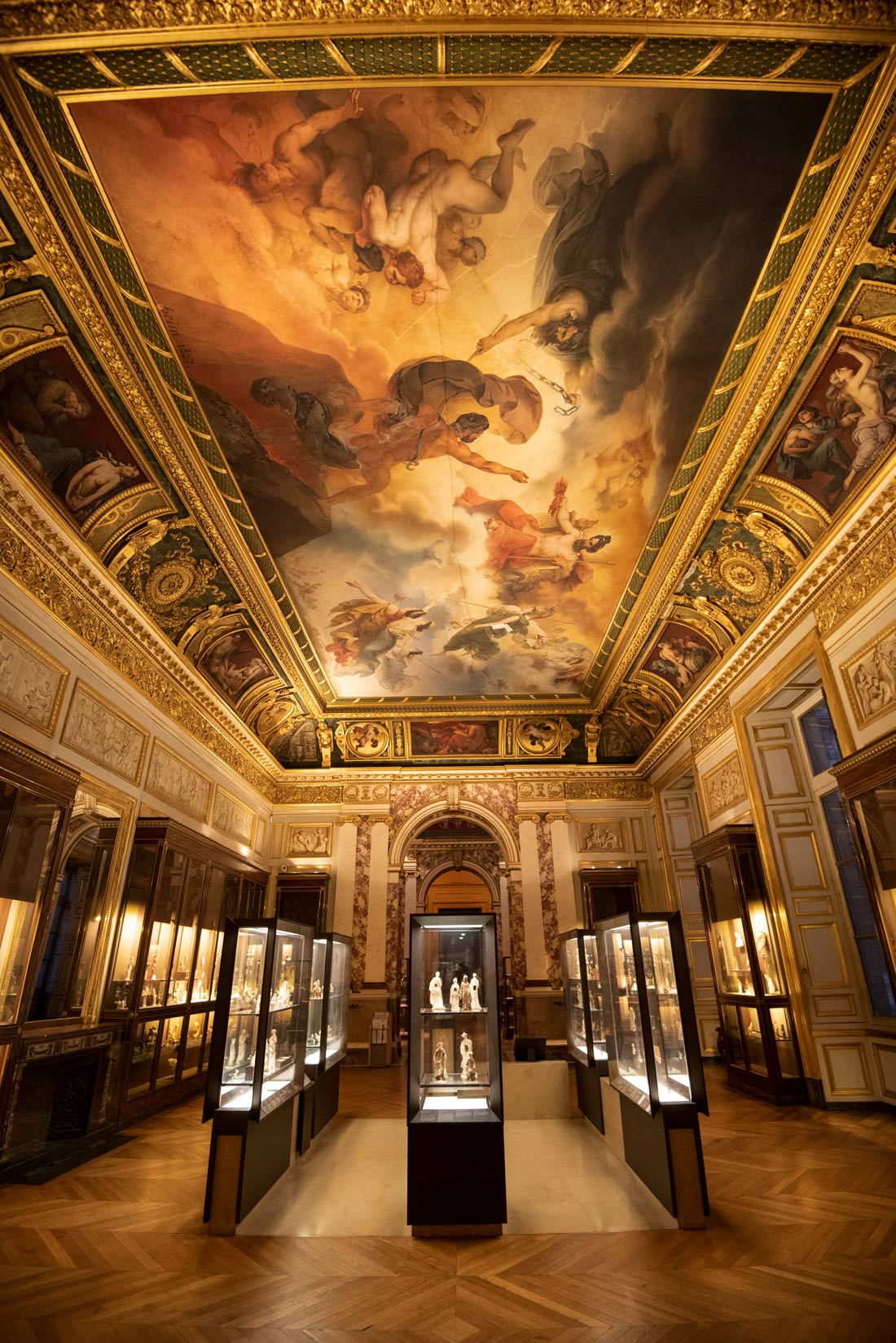
Many of the elaborately decorated rooms of the palace are the backdrop for its unparalleled exhibits of artifacts, which are so exquisite that many patrons never get around to looking up at the stunningly decorated ceilings.
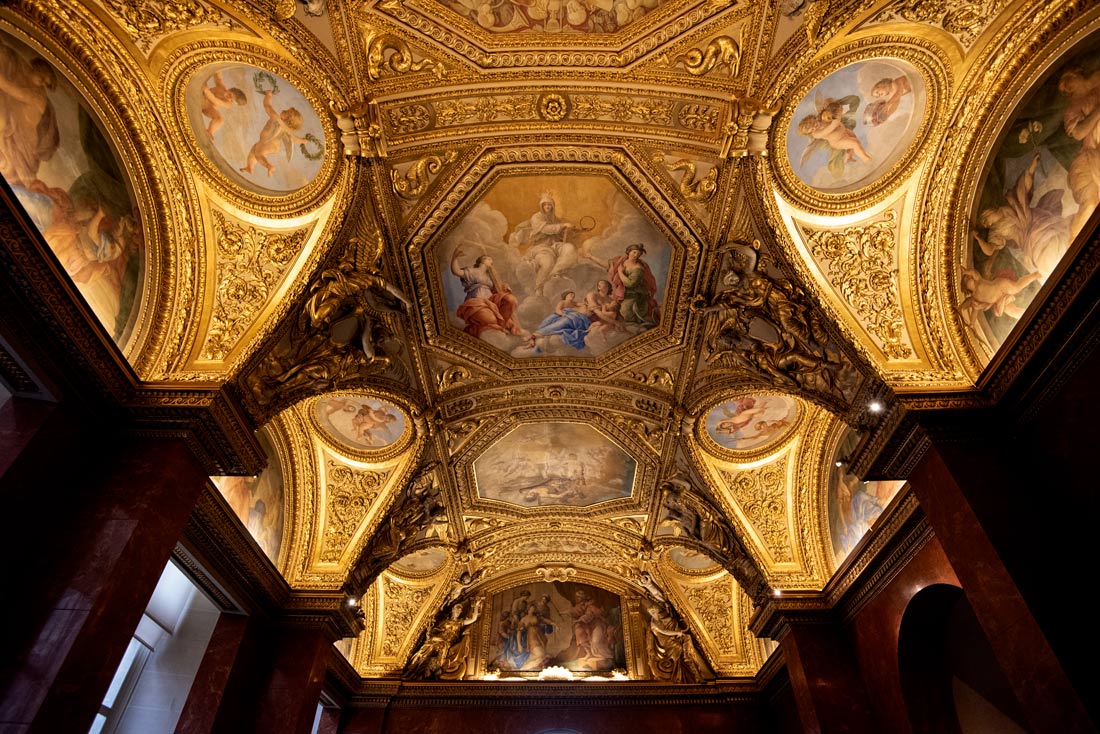
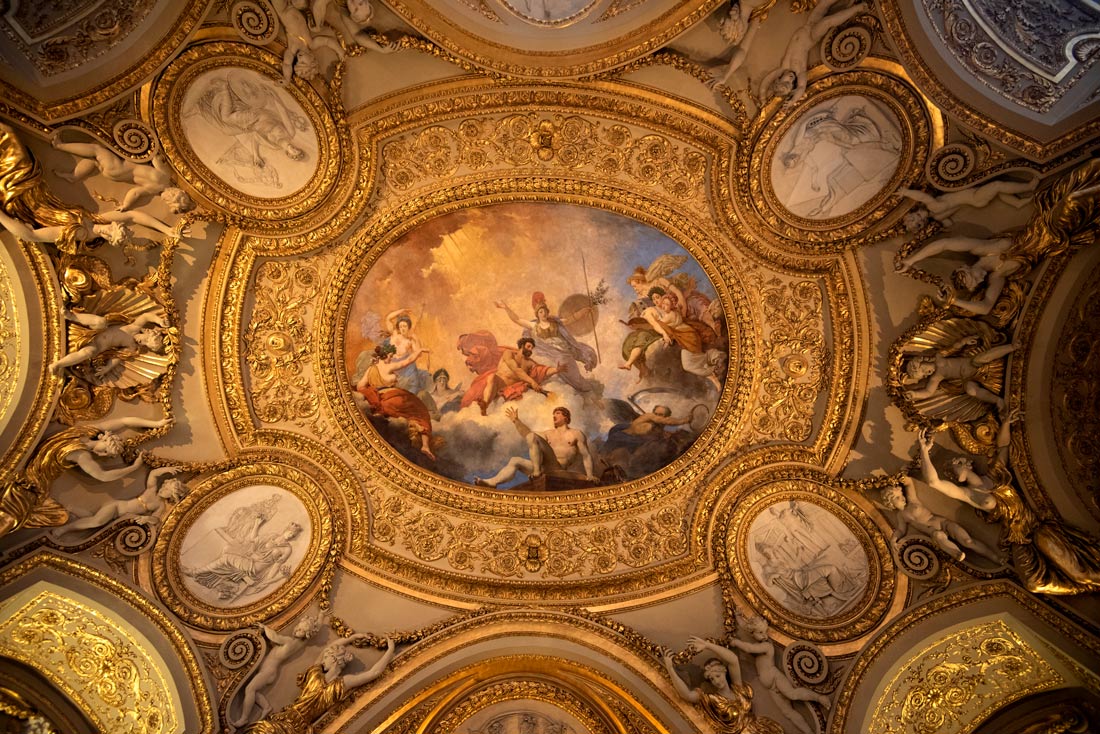
During the Third Republic (1870–1940) the Louvre acquired new pieces mainly by donations and gifts. In 1863, an expedition uncovered the sculpture Winged Victory of Samothrace in the Aegean Sea. It has been prominently displayed at the Louvre since 1884.
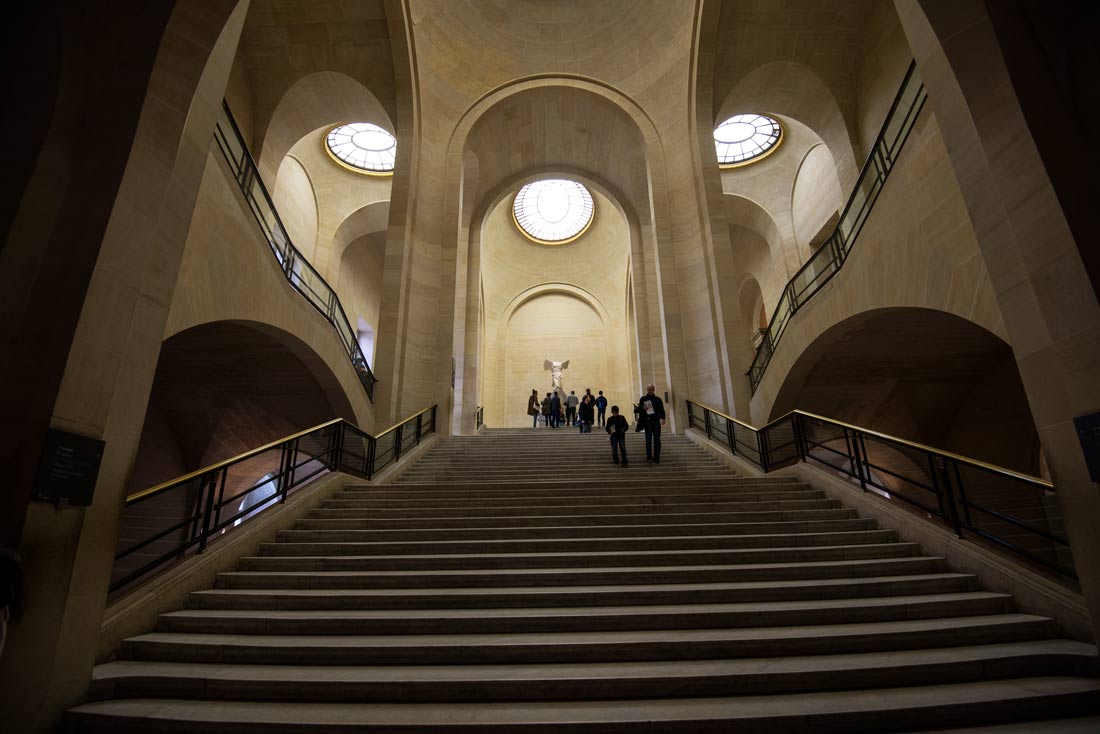
The Winged Victory of Samothrace is showcased at the top of the Grand Staircase.
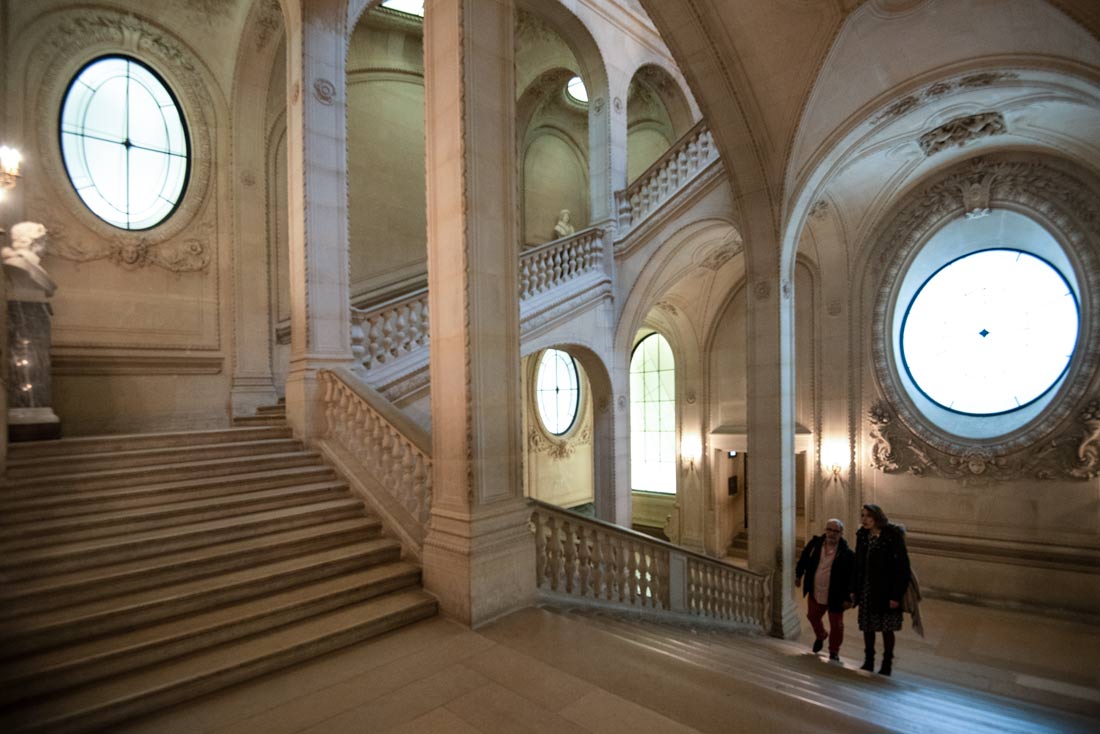
Another famous staircase in the Louvre is the the Lefuel staircase designed by French architect Hector-Martin Lefuel.
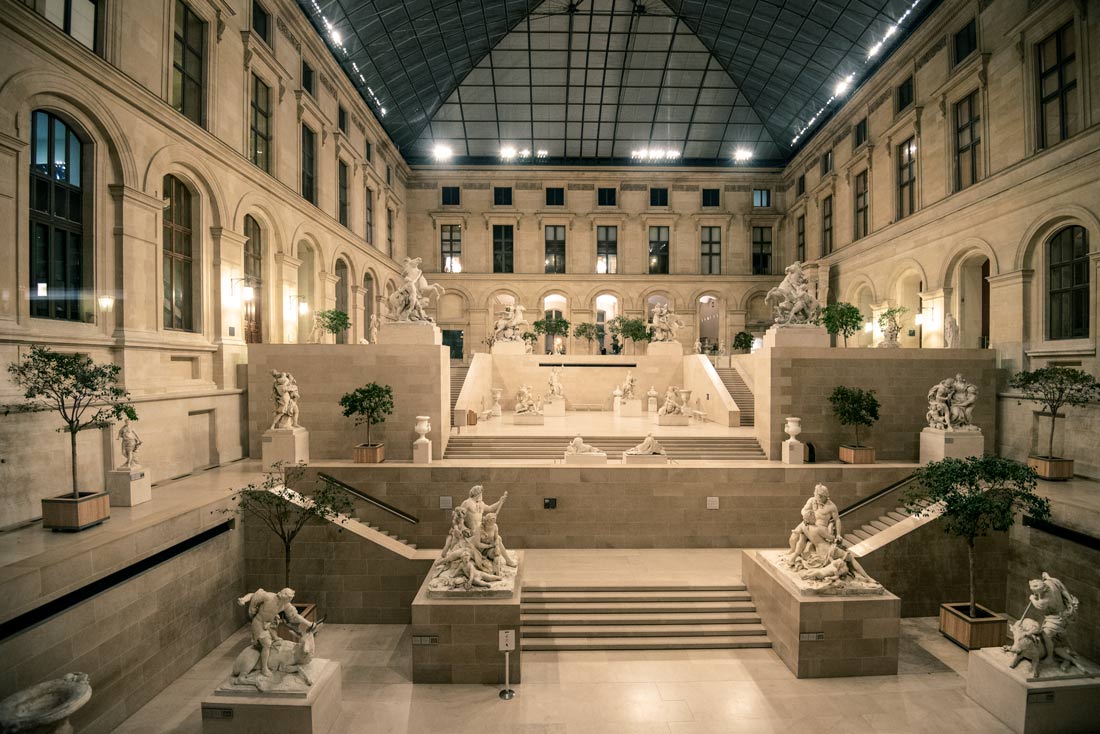
Two glass-covered courtyards in the museum, display marble sculptures and trees.
At the beginning of World War II the museum removed most of the art and hid valuable pieces in the French countryside, secretly moving them to different chateaus and churches through the war. When the Germans occupied Paris, the Nazis placed Count Franz Von Wolff-Metternich in charge of the Louvre. He knew about the evacuation and hiding of the Louvre art collection and helped its organizer, Jacques Jaujard, to preserve the Louvre’s art collection from looting. The Nazis commandeered the nearly empty Louvre as a clearinghouse to catalogue, package and ship art and personal items confiscated from wealthy French, mostly Jewish, families back to Germany. Many items were earmarked for the personal collections of high-level Nazis. Those deemed morally degenerate, including works by Picasso and Salvador Dali, were sold to non-German collectors or burned in a public bonfire in 1942.
After the war, 61,000 artworks out of more than 150,000 stolen ones returned to France were assigned to the Louvre's Office des Biens Privés. In 1949, it entrusted 2,130 unclaimed pieces to the Direction des Musées de France to keep them under appropriate conditions of conservation until their restitution to their owners. Some 10-35 percent of the pieces are believed to have been confiscated from Jews. They were exhibited in 1946 and shown all together to the public from 1950–1954 to allow rightful claimants to identify their properties. Since then, those that haven’t been reclaimed have been displayed in several French museums including the Louvre. From 1951 to 1965, about 37 pieces were restored to families of their original owners. In 1997, the government said the Louvre had 678 pieces of artwork still unclaimed by their owners. During the late 1990s, the comparison of the American war archives with the French and German ones as well as two court cases settled some heirs' rights. Since 1996, 47 more pieces were restored to their owners.
Napoleon's campaigns acquired Italian pieces by treaties, as war reparations, and Northern European pieces as war spoils as well as some antiquities excavated in Egypt, though the vast majority of the latter were seized as war reparations by the British army and are in the British Museum. The Dendera zodiac is claimed by Egypt even though France acquired it in 1821, before the Egyptian anti-export legislation of 1835. The Louvre has argued in favor of retaining this item despite Egypt’s requests for its return.
France has generally upheld the principle established in 1566 that assets acquired by the state could not be given away but were the heritage of the French people. However, France’s former defeated foes are demanding their treasures and history back as the issues has shifted from the status of objects to the issue of human rights. This has required museums to rethink the doctrine of inalienable collections and France has returned some artifacts to Africa and other countries. The museum participates in arbitration sessions of UNESCO's Committee for Promoting the Return of Cultural Property to Its Countries of Origin. In 2009, five Egyptian fragments of frescoes purchased from private collections were returned to Egypt after their tomb of origin was brought to authorities’ attention.
In 1983, French President François Mitterrand proposed a plan to renovate the Louvre and move the Finance Ministry out of it. The Louvre was divided into three wings. Visitors enter the museum via a large steel-and-glass pyramid in the courtyard, descend a circular staircase into a reception area with ticket counters and then head for whichever of the wings they are interested in.
American architect I.M. Pei designed the pyramid, reception area, a vast underground complex of offices, shops, exhibitions, storage, parking, an auditorium, a tourist bus depot and a cafeteria under the central courtyards. The pyramid, Pei’s most famous structure, was controversial when it was built.
Pei was an internationally respected architect but had never worked on a historic building before. Nonetheless, Mitterand was so impressed with Pei’s modernist extension to the National Gallery of Art in Washington D.C. that he insisted on hiring Pei. Mitterand at the time was trying to transform Paris with a series of modernist projects.
Pei’s design for the pyramid in the Louve’s courtyard sparked bitter criticism. Pei could hardly walk down a street in Paris without angry glares directed at him and some 90 percent of Parisians at one point opposed the project. “You’re not in Dallas now!” one meeting of the French historic monuments commission snapped at him in a meeting that ended in chaos before Pei could present his ideas. The director of the Louvre, Andre Chaubaud, resigned in protest to the design. Some claimed that the pyramid had 666 glass panes, the number of the demon and beast in the Apocalypse, although in fact it has 673 panes.
The pyramid has the same proportions as the Great Pyramid of Giza. At its base, it measures 116 feet wide and 70 feet high. Ninety-five tons of steel and 105 tons of aluminum support it. Three smaller pyramids support it, with an inverted one visible from underground. The glass panes of the pyramids are made up of diamonds and triangles, which creates the appearance of cut jewels. One of the challenges of building the pyramid was finding clear glass, as most glass at the time had a greenish tint. Pei wanted to match the metal to the color of the roofs of its surrounding buildings, but they were in 11 shades of gray, so one had to be chosen. Pei insisted that the pyramid not rise above the Louvre’s rooftops.

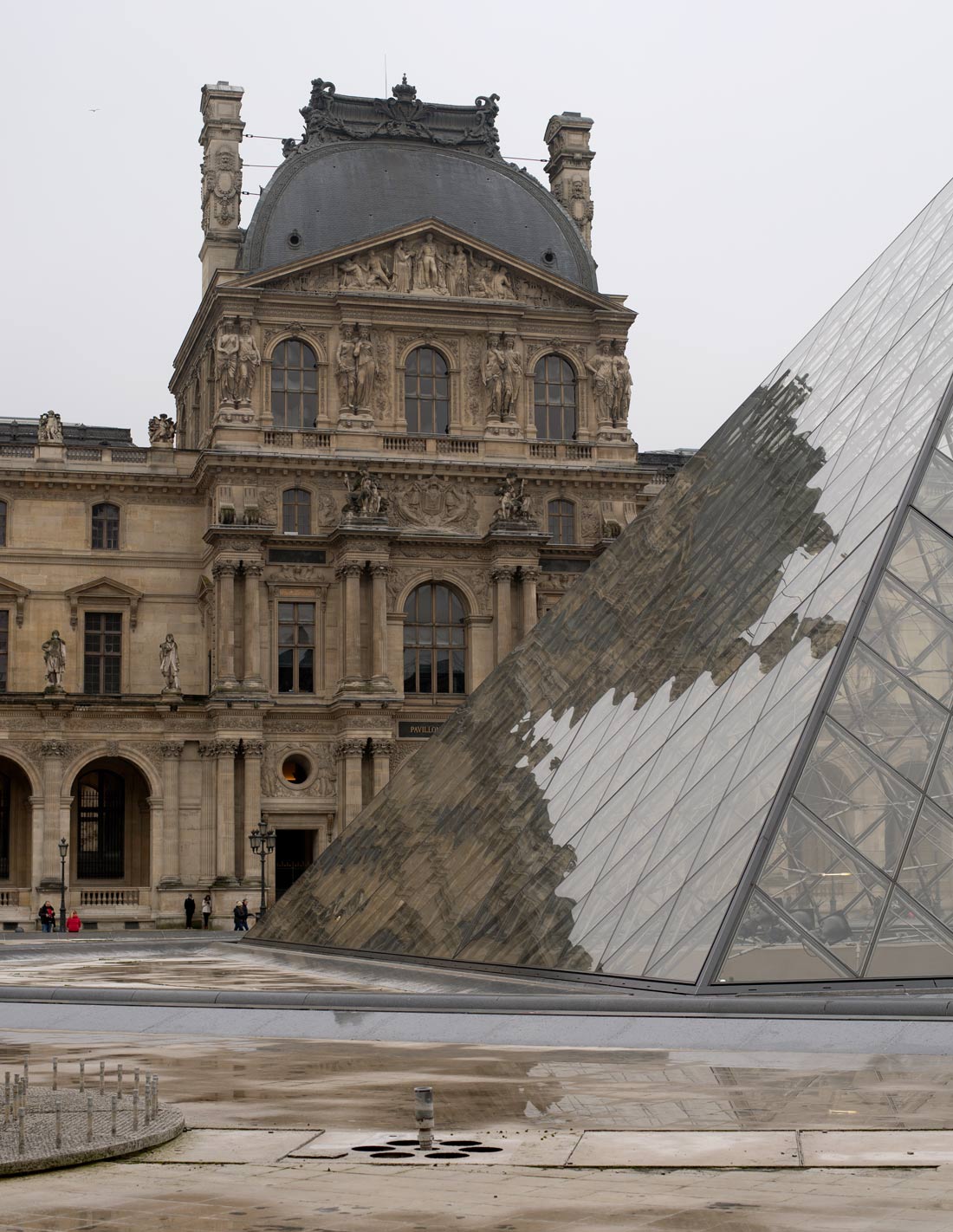
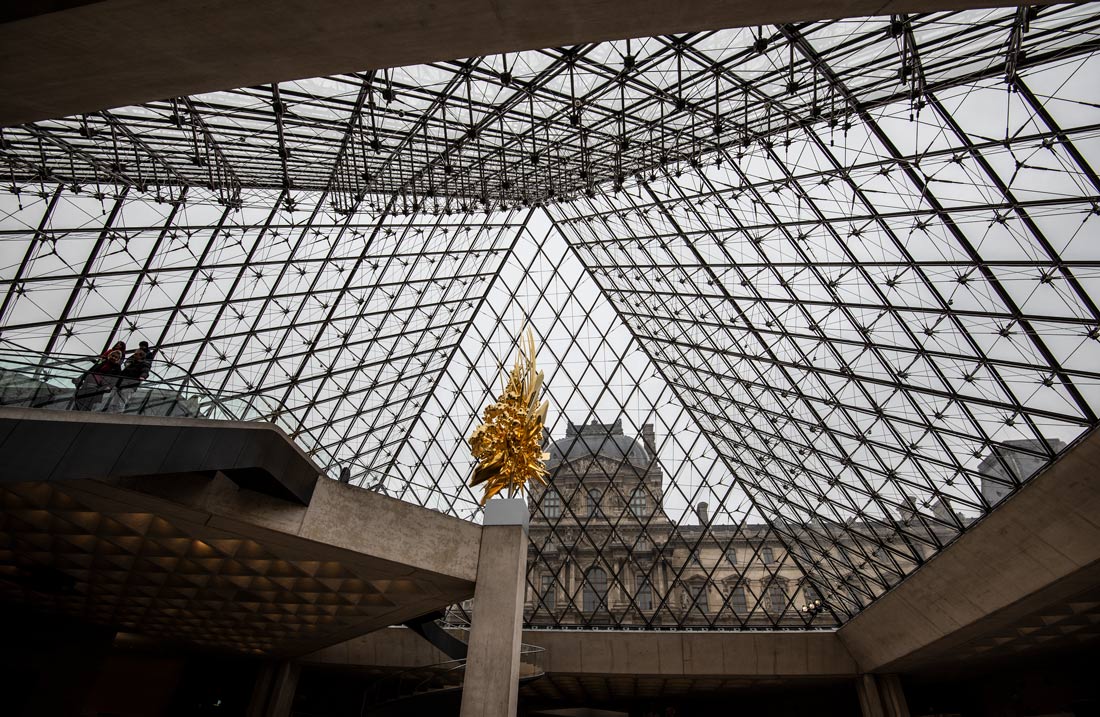
The design is credited with turning the museum around. Pei designed the expansion for up to two million visitors a year, a fifth of the number that visited last year. The pyramid has become one of the Louvre’s most beloved landmarks since it opened in 1989. The structure has been the venue for public gatherings, fashion shows, screenings, and political rallies.
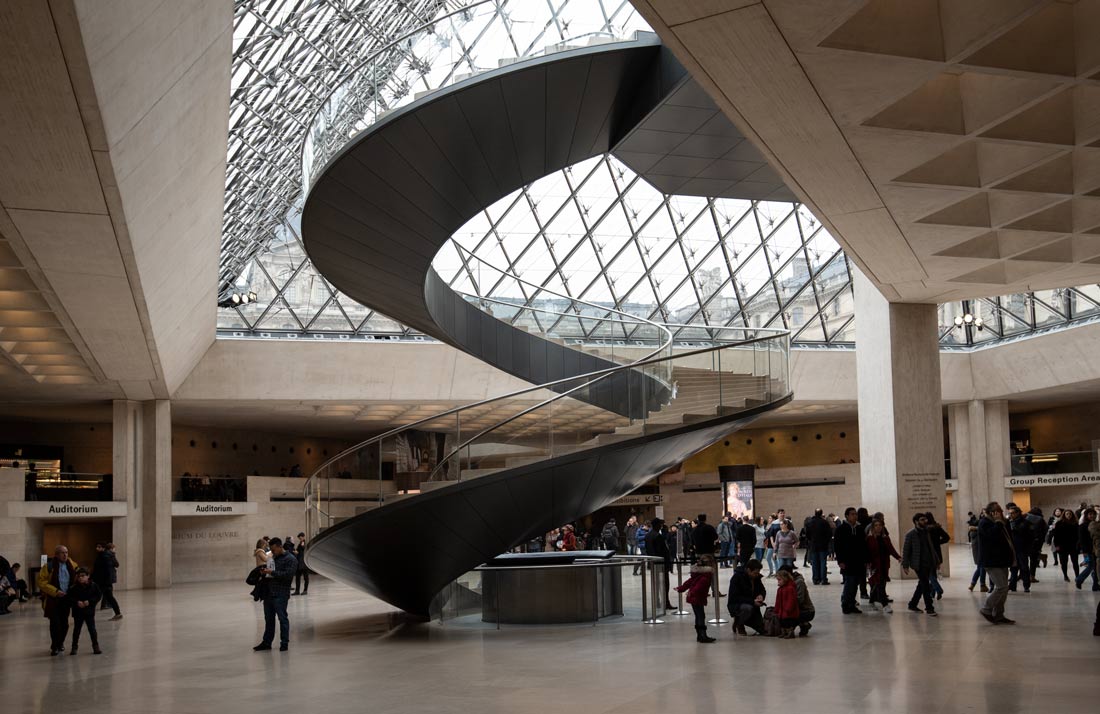
An inverted pyramid that is a skylight in the underground shopping mall in front of the Louvre was completed in 1993, the Carrousel du Louvre. It has the first Apple Store in France, and a McDonald's restaurant, the presence of which has created controversy.
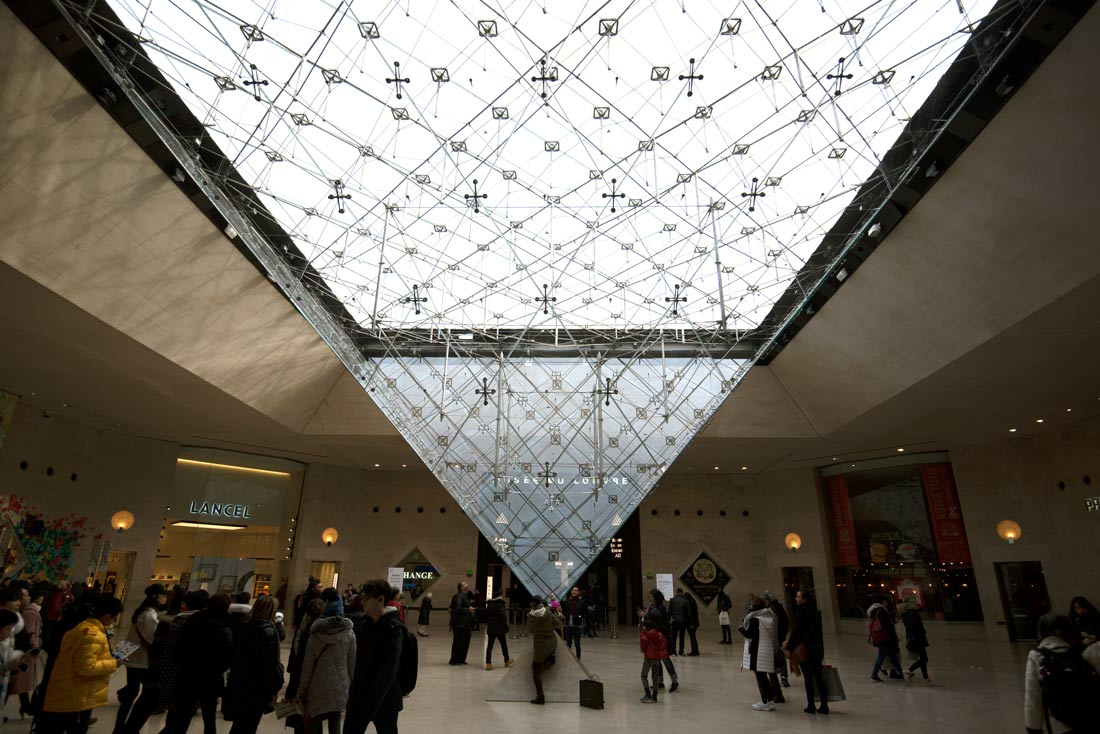
The Louvre has become the prime example of a type of architectural restoration in which the French excel – the adaptation and blending of historical architecture with modern technology and function. Some 38,000 objects from prehistory to the 21st century are displayed in the Louvre's almost 783,000 square feet.
The French government owns the Louvre, but since 2003 it has been required to generate funds and now raises as much money as it gets from the state. The government pays operating costs such as salaries, safety and maintenance, while new wings, refurbishment and acquisitions are financed by the museum. The Louvre raises several million dollars per year from exhibitions it curates for other museums. The Louvre earned $2.5 million by allowing the filming of the 2006 movie The Da Vinci Code in its galleries. The museum employs some 2,000 people.
In the past 20 years, efforts have been made to expand the international reach of the Louvre’s brand. Although the majority of annual visitors to the museum are French, about 1.5 million are from the United States and a million from China, with other countries making up smaller crowds.
French officials in 2012 opened a satellite museum on the site of an abandoned coal pit in the former mining town of Lens, France, to relieve the crowded Paris Louvre, increase museum visits, and improve the industrial north's economy.
Louvre Abu Dhabi opened its doors to the public in Abu Dhabi in 2017. The museum was established under an agreement between France and Abu Dhabi that allows the musum to use the Louvre’s name. France agreed to rotate between 200 and 300 artworks through the building during a 10-year period; provide management expertise; and provide four temporary exhibitions a year for 15 years. The art comes from the Louvre and other French museums.
In 2009, France approved a plan to create a storage facility for objects from the Louvre and two other national museums northwest of Paris in a flood zone, but the plan was scrapped in favor of the Louvre creating a place for more than 250,000 works of art in Liévin, France.
Experts from the Louvre participate in a variety of exhibitions, research and events globally, including Louvre-themed luxury cultural cruises of the Adriatic and Persian Gulf. The cruises have onboard programs on decorative arts, Greek sculptures and Islamic art.
The Louvre has been undergoing renovations for the past five years, with 366,000 square feet having been renovated. This required the Mona Lisa to be moved for a short time so the wall on which is usually hangs could be renovated.
Despite the large number of visitors, today’s Louvre is considerably more comfortable than it was in the days of French royalty. Historians say the smells in the palace when the royal court was there were unbelievable, because the gorgeous embroidered gowns and suits of royalty were never washed and the rooms were not ventilated. Court members rarely bathed and lice infestation was rampant. Louix XIV took only two baths in his life and Marie-Antoinette bathed once a month. The palaces lacked plumbing and courtiers used staircases, hallways and fireplaces as bathrooms, leaving feces and puddles of urine on the floors. The lack of sanitation meant that illness spread easily through the huge court, which had thousands of royals, nobility, officials, servants and military officers.
A British couple got a chance to see what it was like to live in the Louvre in May after they won a a competition by AirBnB in which participants had to answer the question "Why would you be the Mona Lisa’s perfect guest?" The winner was brought to Paris for a special tour of the museum by an art expert, enjoyed the Mona Lisa at a lounge set up in front of it, then had dinner served in front of the Venus de Milo, followed by an acoustic concert in the apartments of Napoleon III and an overnight stay in a mini-pyramid set up in the pyramid.
The Louvre also is entering virtual reality with a Leonardo da Vinci exhibition that enables visitors to take a close look at the Mona Lisa with the help of virtual reality. The experience will reveal details of the artwork that can’t be seen as well as techniques da Vinci used to create it and will explore the identity of the woman in the painting. The experience also will be available through digital subscription services to that those who can’t physically see the exhibit can participate in it.
Check out these related items
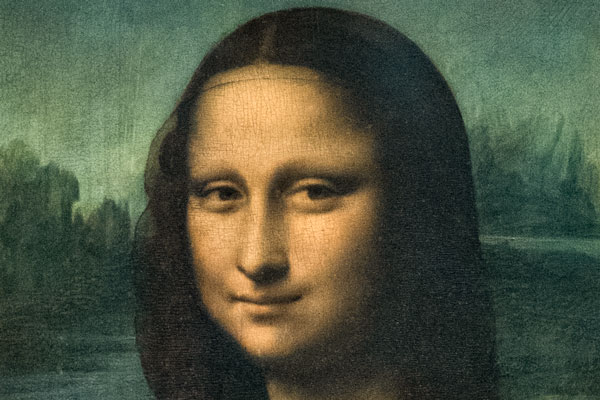
The Many Layers of Mona Lisa
Mona Lisa has long been mysterious, not just because of her smile. But was mystery or realism her famous creator's object?
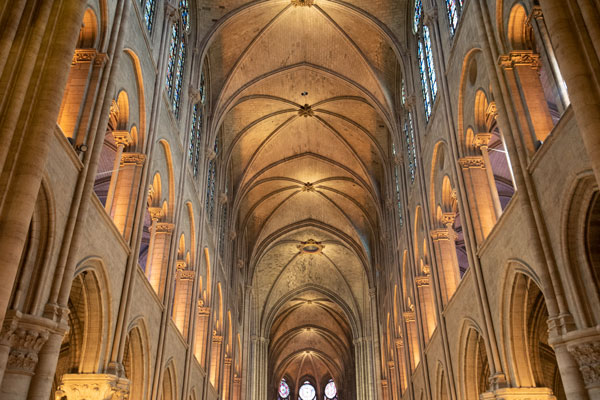
The World Mourns Notre Dame
Notre Dame Cathedral of Paris, France's national cathedral, was badly damaged in a fire.

Treasure Room and Two Palaces
In the French palace at Fontainebleau is a treasure room of dazzling artifacts taken by the French army from a palace in Beijing.
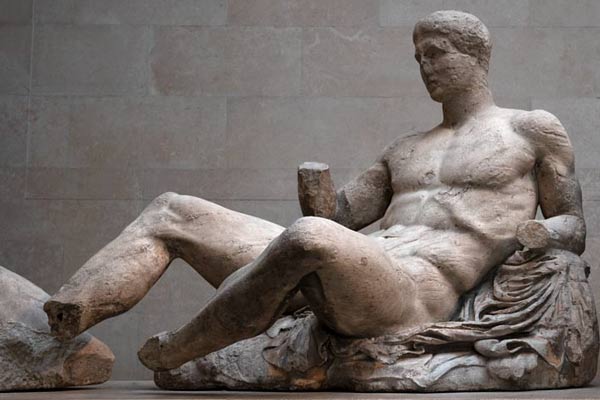
Britain and Greece’s Parthenon Dispute
What are the chances that two men from one family set off international disputes by carting off treasures from Greece and China?
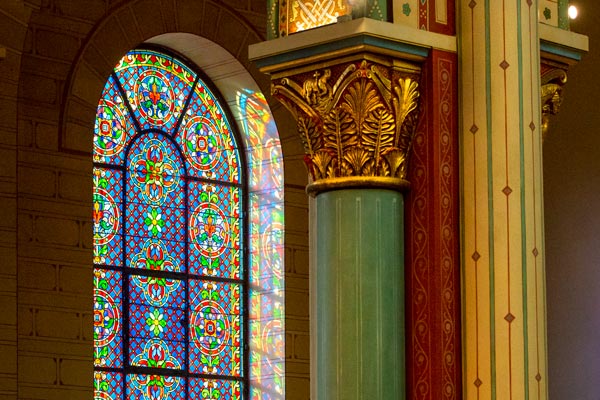
Paris’s Oldest Church Restored
Paris' oldest church, Saint Germain des Prés, is emerging from layers of grime and soot as a meticulous restoration reveals its vibrant color.
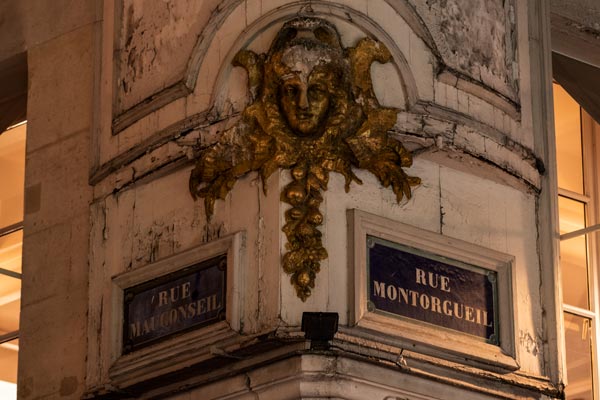
Paris’s Oldest Food Market
Rue Montorgueil in Paris began as a village street with a medieval church and food market. It has retained that character.
